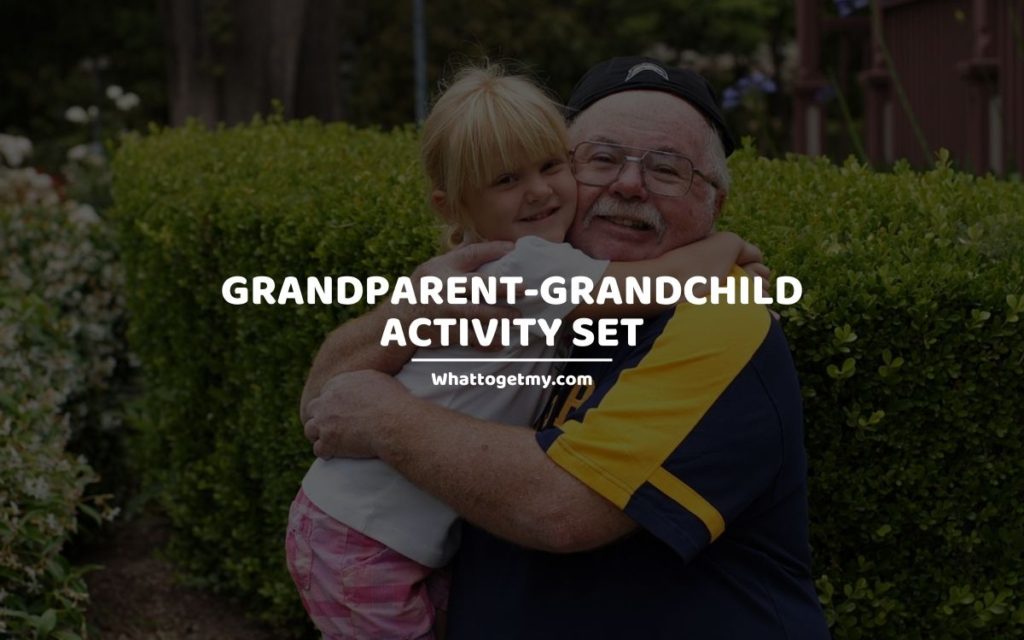Classroom Warm-up Activities for Middle School
WhatToGetMy Instructional Article
Doing warm-ups is the best way to start your lesson. Just a couple of classroom warm-up activities for middle school can engage your students and boost their productivity. Even quick 5-minute games can help your students to get focused and interested in the lesson.
You already know that starting the lesson with an interesting warm-up activity will help you create a positive learning environment. However, you need a lot of ideas to keep things fresh. We’ve got you covered! Check out this article for interesting middle school warm-ups that can be adapted for any subject you teach.
Before we get to the activities, we’d like to mention a few things:
- Break the school routine every time you can. Kids sit at their desk the entire day, so have them stand up or walk a bit when you’re doing warm-up activities.
- Try switching between warm-ups and motivational activities for middle school students. These fun activities can help you break the ice and create an engaging learning environment.
- Warm-ups should be connected to the lesson plan. Try not to waste precious minutes in the class with just filler activities.
What are the warm-up activities?
Warm-up activities for middle school are quick dynamic activities used at the start of the lesson to get students interested. They introduce topics or revise pre-existing knowledge. Teachers can also use warm-ups to gather information about the level of knowledge students have about a certain topic. This is very useful when you’re trying to break the students’ misconceptions.
Doing warm-ups frequently will allow you to judge the character and ability of each student. You’ll notice what students need more boost, so you can offer them additional help. It’s also good to know what students work well together and what groups tend to disrupt the lessons, so you can organize the students for assignments and discussions more efficiently.
Overall, warm-ups are an introduction to the lessons. They allow the teachers to smoothly transition into new materials, introduce ideas and vocabulary, set the tone of the lecture, break the barriers, and misconceptions students might have, and raise students’ energy levels.
Ultra quick activities
Sometimes you only have time for 5-minutes warm-up classroom activities. Try out these activities for a quick but productive start of the day.
Association
Prepare 5-10 words or phrases related to the lesson ahead. Say one word and encourage the students to tell you the first things that come to their minds. This will stimulate the students to think about the topic in question. Make sure that all kids say at least 2-3 words, so they can be equally engaged.
Quick quiz
Students don’t like quizzes when there are grades involved. However, if you play a quick trivia game that won’t be graded, they might be more interested. Give them 5-10 questions that everyone needs to answer on paper, or ask each student one question.
You just need to see what they already know about the topic ahead, so you can put focus on the things that most students find difficult. It’s better to spend more time during the lesson on the things your students don’t know, than on repeating the stuff they already know, right?
Journaling
This is an interesting way of starting school mornings. If kids don’t have time to write a journal before school, give them five minutes at the beginning of class to write their thoughts. Instruct the kids to bring their special notebooks on Mondays and journal together. You write a question or two on the board and students will write a couple of paragraphs to answers.
Depending on your subject and lesson plan you can ask questions like “who is your favorite scientist and why”, “do you recycle”, etc. If you teach a foreign language, ask simple questions but insist on using that language. You can review the journals to give kids some feedback too.
Vocabulary builder
Make a list of various words relating to the next topic in your class. Ask each student to choose one word and explain how it relates to today’s topic. Use words that might be new to them or others they don’t use frequently, but make sure to explain the meaning of each word before the game begins.
The W questions
Ask your students the “W questions” (who, what, where, when, and why). We use these questions to describe events, so pick something that happened in relation to your next subject. For example, if you’re a science teacher and you want to talk about gravity, ask questions about Newton and the circumstances of his discovery.
Middle school activities
When you’re looking for warm-up activities, you need to make sure they’re age-appropriate. Most activities can be adapted to fit any class. Just don’t try something too complicated that needs a lot of explaining time.
Draw your knowledge
Students love to draw, so encourage them to express their knowledge with graphs and pictures. They can even use stick figures as long as they’re drawing something that shows the understanding of a certain concept. Give them simple tasks at first, then ask them to represent more complex concepts. That way, you see what are their knowledge levels and do they have some misconceptions about the topic at hand.
Opinionnaire
The purpose of the opinionnaire is to check what students think about a certain subject. Form a list of statements and give them to the students. Then, they’ll write next to each sentence whether they agree or don’t. You’ll be surprised to find out that a lot of students will write “agree” next to the completely false sentences. This is because their heads have been filled with information from a lot of resources, from the traditional media to the internet.
Guess the answer
Pose the questions related to your subjects and give 4 possible answers. Then let the students guess the answer with an anonymous voting system. The goal is not to score points like in typical quizzes but to get students interested in the topic, so make sure to find fascinating and unique questions.
Evocations
Give the students evocative quotations, photos, or songs. Let them think through and discuss the things that came to their minds. The evocative warm-up can help you understand what ideas students have about certain topics. This will allow you to clear some confusion and misconceptions before you start the lesson.
Board writing
As you know, passing notes to “talk” isn’t uncommon in class. Try using written communication, which kids obviously like, to introduce a new lesson. Write a phrase on the board and ask students to continue with the first things that come to their minds. They can either come to the board in groups or individually but they need to write something related to the phrase in question. This will get them to think and come up with ideas you can address in the lesson later.
Warm-up activities for English class
Learning a language is all about practice. You need to be familiar with the vocabulary and work on communication. That’s why warm-up activities are perfect for language classes. Useful tools such as a board or flashcards can create a fun learning environment. The activities below can also be used as ESL warm-up activities for high school students.
Word chain
Create a chain by saying a word and asking one student to say another that starts with the last letter of your word. The chain continues with the next student who does the same thing. You can introduce some rules like “only use adjectives” or “animal-related vocabulary”. It can be helpful that you have a plush ball to pass around. The person holding the ball needs to come up with the next word. Write all the words on the board, so students see the spelling.
As many words as possible
This fast-paced activity starts with you writing a letter on the board. Give students one minute to write as many words as possible that begin with this letter. Go through their examples, spell the words, and use them in a sentence.
Correct the sentences
Practice grammar and spelling by writing an incorrect sentence on the board. Students need to find mistakes and correct them. You can write a couple of sentences, so every student has a chance to catch one mistake. This will help them avoid grammatical errors in the future.
Make your flashcard
You know how useful flashcards can be for studying. Do your students know how to make them? Take a couple of minutes to make word flashcards together. You can suggest the words and kids can draw a picture or leave everything up to them and just check their spelling afterward.
Circle talk
Choose a topic and give some words that relate to it. Pass a plush ball to one student and ask him to either add the words relating to your topic or come up with a new topic. The student then passes the ball to one of his/her classmates. Start with something simple such as “breakfast food” and build from that. Make sure to write each topic and words on the board.
Questions with the ball
When you’re learning a language, you need to work on conversation. What’s the better way to start a conversation than by asking simple questions? You just need a plush ball you’ll pass around to spark the conversation.
Choose the topics you already covered because you need to practice fluency. Of course, there are lots of ways to practice conversations such as pairing the students, so they discuss the questions between each other. However, when the entire class is involved you can correct the mistakes on the spot.
Alphabet race
When you teach English as a second language, you need to make sure all students know the alphabet. A fun activity that can help the students memorize letters is an alphabet race. Have your students line up against the wall opposite of the board and give two markers to two students. Write random letters on the board and ask the kids to circle the letter you say. The first student that comes to the board and picks the correct letter is the winner. For a bigger challenge, you can use words instead of the letters but the principle stays the same.
Dice game
Divide the students into groups and give each group one dice. Have the students make a list of 6 unique words. Then, the students in the groups will have duels with each other. Two students roll the dice and say the words on their list correlating to the numbers they’ve rolled. The challenge is to make a sentence containing both words. Your job is to monitor each group and check whether their sentences are correct. After duels in groups, you can play together with you picking the students who’ll roll the dice and the ones who’ll create the sentences.
Frequently asked questions
How do you warm-up students in the class?
Any activity that changes the usual tone of the class is good for warming up the students. You can sing a song together, talk about recent events, or try the warm-up activities suggested in this article.
How can I make the ESL class interesting?
To make an ESL class interesting include a lot of conversation in your lessons. You can debate topics, create stories together, or play some of the games mentioned above.
Conclusion
We hope that you find these classroom warm-up activities for middle school interesting. Try them out tomorrow, because you never know what your class will absolutely love. Shake things up with non traditional styles of learning and add some leadership activities for middle school students too. Kids surely need to develop leadership and communication skills.
01 HOUR 25 MINUTES
ESTIMATED TIME DESIGNING AND UPLOADING THIS ARTICLE
07 HOURS 22 MINUTES
ESTIMATED TIME RESEARCHING AND WRITING THIS ARTICLE
You Might Also Like


